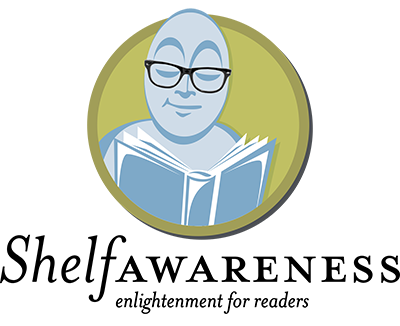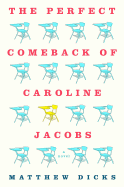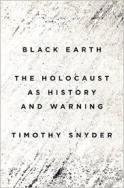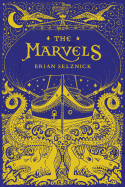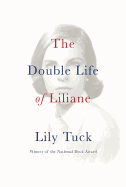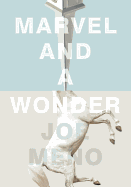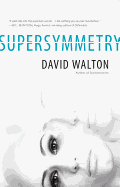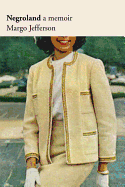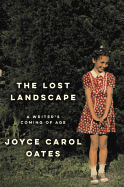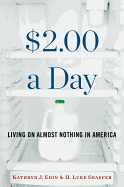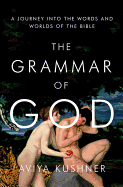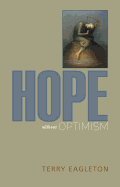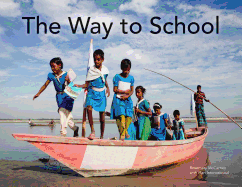Tuesday, September 15, 2015
Wm. Paul Young isn't afraid to tackle big theological themes. In the phenomenally selling The Shack, a man in the midst of suffering meets the Trinity in down-to-earth personhood. Now, in Eve (Howard Books, $16 paperback), Young writes about the creation of the world and original sin. The lyricism of the novel, especially in his description of the Creation, is breathtaking. He explained: "I wanted to maintain a deep respect for science but the only way to access it was through poetic lyricism. I think it is one of the most beautiful parts of the book, but for some it will be akin to swallowing a mini-explosive hidden inside a really good piece of chocolate."
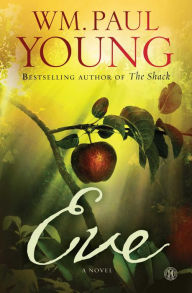 Young likes to sprinkle explosives throughout his books. In The Shack, God is portrayed as a black woman; in his new novel, Eve also is black. Young says he's "always toying with assumptions and paradigms, attempting to break down all the barriers and divisions that we have constructed to separate ourselves one from the other. I am Mackenzie in The Shack, and need a much bigger God than the one of my own traditions. In Eve, I am dealing with our human roots and there should be no surprise that she is African." He refers to the Holy Spirit as "Her": "Throughout the Hebrew Scriptures, Ruach (the Spirit of God) is in the feminine gender, as well as pronouns referring to her. This begins in verse two of Genesis 1."
Young likes to sprinkle explosives throughout his books. In The Shack, God is portrayed as a black woman; in his new novel, Eve also is black. Young says he's "always toying with assumptions and paradigms, attempting to break down all the barriers and divisions that we have constructed to separate ourselves one from the other. I am Mackenzie in The Shack, and need a much bigger God than the one of my own traditions. In Eve, I am dealing with our human roots and there should be no surprise that she is African." He refers to the Holy Spirit as "Her": "Throughout the Hebrew Scriptures, Ruach (the Spirit of God) is in the feminine gender, as well as pronouns referring to her. This begins in verse two of Genesis 1."
By using fantasy in telling his stories, Young gives readers "permission to suspend critical judgments that they would normally employ," and he can more fully explore mystery. In Eve, John the Collector says, "Mystery creates a space where trust can thrive. Everything in its time and time is God's playground. Trust me, being surprised by everything is so much better than needing to control everything." Eve is a surprise in many ways, inviting readers into mystery and wonder. --Marilyn Dahl, editor, Shelf Awareness for Readers
The Perfect Comeback of Caroline Jacobs
by Matthew Dicks
Caroline Jacobs has always been wimpy. She's mostly happy in her life, but she lets her husband (or coworkers, or friends, or daughter) make the big decisions, and she quietly acquiesces. Until the day when the bullying president of the PTA goes one step too far, and Caroline tells her off. Emboldened by this maneuver, the next day Caroline shocks her daughter, Polly, by taking her out of school to head off on a spontaneous road trip from Delaware to Massachusetts to confront an old friend. Twenty years earlier, Emily humiliated her, and Caroline realizes that she's been a pushover ever since.
She wants to stand up for herself at last, but will a lifetime of giving in catch up to her? Does she have the backbone to confront Emily and explain how the repercussions of Emily's actions have lingered for 20 years?
The Perfect Comeback of Caroline Jacobs is a fairly lighthearted look at some deep topics: bullying, personality and the influence our words and actions can have on others. Fully of quirky characters, including Polly, a brash, slightly punk, super intelligent teenager; Caroline's oddball mother; and her mother's blind boyfriend, The Perfect Comeback of Caroline Jacobs is an excellent, fast read. Matthew Dicks (Unexpectedly Milo, Memoirs of an Imaginary Friend) has created a likable, quotidian heroine; readers who like an underdog, or who had socially traumatic incidents of their own as teenagers, will be rooting for Caroline to get her revenge. --Jessica Howard, blogger at Quirky Bookworm
Discover: Wimpy Caroline Jacobs has decided to stand up to a high school bully--20 years late.
The Double Life of Liliane
by Lily Tuck
Winner of the National Book Award for The News from Paraguay, Lily Tuck exhibits her trademark brevity and clean prose in her sixth novel, The Double Life of Liliane. It portrays the rich but disorienting young life of Liliane, the only child of a multilingual Italian film producer father, Rudy, and a beautiful, artistic mother, Irène. Readers who bring plenty of imagination to this metafictional, autobiographical narrative will be rewarded with the keen exploration of a young girl's mind, a complex family legacy and a world churning through war and migration.
Liliane's father, a German Jew, and half-Jewish mother leave for Paris in 1933, when Hitler's ambitious race cleansing program began to bloom. When the war comes to Paris, Irène, now divorced, and Liliane escape to Lima, Peru, where Rudy has family, and then to New York City's Upper East Side, where Irène marries the kindhearted, heavy-drinking banker Gaby.
Determined to become fluent in English along with her French and rudimentary Spanish, Liliane retreats into language, books, horseback riding and fantasies of romantic lovers. She visits her father annually in Italy, reluctantly attends a New Hampshire camp, visits relatives to learn about the family legacy of professors, writers and iconoclasts, studies literature at Radcliffe and, as the novel closes, follows a boyfriend to Bangkok. Hers is not only a "double life" of French and English fluency, but also one of balancing intellectual discipline and sensual curiosity, privilege and persecution, and the contrasting social circles of her divorced parents. In The Double Life of Liliane, Tuck has achieved remarkable success. --Bruce Jacobs, founding partner, Watermark Books & Cafe, Wichita, Kan.
Discover: This is a triumph of autobiographical metafiction, with photos, genealogical digressions and historical allusions as background to a young woman's complex path toward maturity.
Marvel and a Wonder
by Joe Meno
An old man and his grandson inherit a white mare due to a clerical error in a will. Taking care of the horse leads them to grow close after years of living together but never truly connecting. Joe Meno's Marvel and a Wonder takes this familiar story of how an animal can bring people together and jettisons it a third of the way into the book. Instead, Meno seems more interested in the lengths men will go to change their circumstances, and what depravity they'll accomplish along the way.
Two meth addicts steal the horse and lead the man and his grandson on a cross-country search, leaving a wake of bodies that borders on the ridiculous. While Meno writes in lush sentences, evoking authors like William Faulkner, his plot feels akin to Cormac McCarthy. Marvel and a Wonder is about bad men--even the purportedly good ones.
The horse itself may be the most interesting character. Meno nicely contrasts its gentleness toward the grandson, Quentin (as in Quentin Compson, from The Sound and the Fury), and the wildness the horse shows when the grandfather races it against other horses. There are hints from time to time that the mare may be supernatural, and the strange effect it has on people (especially those who mean to sell it for their own gain) emphasizes that depiction. While Marvel and a Wonder doesn't quite come together at the end, it's still a fitting addition to the canon of books about hard men and their relationship to nature. --Noah Cruickshank, marketing manager, Open Books, Chicago, Ill.
Discover: A pastoral novel of family, desperation and a horse like no other.
Science Fiction & Fantasy
Supersymmetry
by David Walton
Fifteen years ago, Alex and Sandra Kelley were one person, until their father's quantum physicist friend opened up another dimension and let in a varcolac, a ruthless quantum intelligence bent on the destruction of everything in existence. As a side effect of the quantum duality, Alessandra became two separate people. Though they share the same memories and experiences from before the split, now each is a very different person.
These days, Alex works for a brilliant yet paranoid physicist named Ryan Oronzi, while Sandra is an officer with the Philadelphia Police Department. Sandra responds to a remarkable quantum event that exploded a local sports stadium, only to find her father's body among the dead. She doesn't even have time to mourn when she receives a call from him, apparently alive and well, from his home nearby. Soon, Sandra figures out that someone--perhaps her sister and the company she works for--has unleashed the varcolac upon the world again through a military-sponsored physics experiment.
With a confident, deft touch, engineer and author David Walton explores concepts of quantum physics while expertly weaving the narrative perspectives of two young women who seem to be the primary targets of varcolac attacks on space-time. The novel's mystery builds to a thrilling conclusion as physicists and police come together to try to defeat this utterly terrifying enemy, who uses time and space to attack Alex, Sandra and their family. --Rob LeFebvre, freelance writer and editor
Discover: An engaging science fiction novel about an ultra-dimensional intelligence bent on destroying reality.
Biography & Memoir
Negroland: A Memoir
by Margo Jefferson
Pulitzer Prize-winning former New York Times culture and book critic Margo Jefferson (On Michael Jackson) and her family moved to Chicago's Hyde Park neighborhood in the 1960s, after spending her childhood in the more middle-class Park Manor bungalows. Negroland is her memoir of the challenges and particular circumstances of growing up in what she calls the "Third Race, poised between the masses of Negroes and all classes of Caucasians."
Her father was the head of pediatrics at Provident, the country's oldest black hospital. Her mother was active in the national black social club the Northeasterners. Jefferson and her sister, Denise, belonged to the national children's club Jack and Jill of America, and attended K-12 classes at the prestigious University of Chicago Laboratory School--an integrated school. From such relative comfort, Jefferson moved on to college at Brandeis, struggled to define her place in the social turmoil of feminism and civil rights, and entered the competitive New York City world of professional criticism and academia.
Jefferson's frank discussion of her own experiences in the relatively narrow "third race" adds a fresh, nuanced perspective to the United States' continuing discussion about race. She summarizes her own ambivalence in Negroland's conclusion: "There are days when I still want to dismantle this constructed self of mine. You did it so badly, I think.... And then I tell myself, so what? Go on." While this may echo Samuel Beckett's famous conclusion to his novel The Unnamable: "You must go on, I can't go on, I'll go on," the source of her determination is wholly rooted in her distinctive experience. --Bruce Jacobs, founding partner, Watermark Books & Cafe, Wichita, Kan.
Discover: Journalist and critic Margo Jefferson's memoir of growing up in Chicago's small circle of "black elite" adds fresh perspective to the history of race in the United States.
The Lost Landscape: A Writer's Coming of Age
by Joyce Carol Oates
Prolific author Joyce Carol Oates (Lovely, Dark, Deep: Stories; A Widow's Story) chronicles her formative years in The Lost Landscape, a book that Oates states is "not meant to be a complete memoir of my life--not even my life as a writer," but rather "something more precious... an accounting of the ways in which my life (as a writer, but not solely as a writer) was shaped in early childhood, adolescence, and a little beyond." Oates, insightful and reflective, examines influential people, places and events that took root in her psyche beginning with her childhood in western New York State, a rural landscape north of Buffalo.
In the book's 28 essays, Oates reimagines the past and offers well-wrought remembrances of pivotal, defining moments, including a cleverly rendered piece narrated by the author's beloved pet hen from childhood. Each essay reveals more about Oates's character and her vulnerabilities, including bouts of childhood shyness, anxiety and insomnia, as she winds her way through college and graduate school, where she, disillusioned, felt like an outsider. The book poignantly closes with tributes to both of her parents and how, even in absentia, they continue to resonate in the author's life--creatively and otherwise.
Oates believes that a "writer is the decipherer of clues," and in this sensitive, illuminating exploration of her early years, she offers fascinating glimpses of the ways in which reality has often served to inspire the fictitious worlds and characters she has created in her wealth of novels and stories. --Kathleen Gerard, blogger at Reading Between the Lines
Discover: Joyce Carol Oates intimately examines her formative years.
History
Black Earth: The Holocaust as History and Warning
by Timothy Snyder
In 1941, a German soldier wrote to his wife from Soviet Belarus, describing killing Jews in the city of Mahileu on October 2 and 3: "During the first try, my hand trembled a bit as I shot, but one gets used to it." What perverse circumstances led to this horror, repeated a thousandfold across Eastern Europe during the Second World War? Can politics or propaganda alone account for a father murdering babies? Could this happen again? Timothy Snyder (Bloodlands: Europe Between Hitler and Stalin) confronts these and other questions in Black Earth: The Holocaust as History and Warning.
The "Jewish question" was not unique to Nazi Germany. Other states openly debated how to handle their large Jewish minorities prior to World War II. At the war's onset, Snyder writes, the Führer envisioned Jewish outposts in distant Siberia, beyond the fertile lands where Slavs would be used as slave labor. The early stages of the Holocaust were far different from the popular images of industrialized death camps and gas chambers. Most of the Jews killed in Eastern Europe and the occupied Soviet Union died from mass shootings, often with eager assistance from non-Jewish locals.
Black Earth is fascinating and horrifying. Snyder combines broad historical overviews with impeccably curated personal stories into a masterful portrait of humanity's lowest point. His convincing original arguments make Black Earth not only an engaging read, but an important piece of scholarly work. With the conditions for genocide always one political calamity away, we cannot afford to misinterpret the lessons of the Holocaust. Black Earth is another means to ensure the promise of "never again." --Tobias Mutter, freelance reviewer
Discover: Timothy Snyder analyzes the preconditions of the Holocaust, and their commonalities with the contemporary world.
Social Science
$2.00 a Day: Living on Almost Nothing in America
by Kathryn J. Edin and H. Luke Shaefer
In the U.S. in early 2011, 1.5 million households with roughly three million children were living on "no more than $2 per person per day in any given month," according to Kathryn J. Edin (co-author of It's Not Like I'm Poor), an innovative sociologist, and H. Luke Shaefer, an expert at calculating the complex incomes of the poor. In the 1990s, Edin studied the budgets of hundreds of U.S. welfare recipients. They were struggling, but getting by. In 2010, she returned to find many families with "no visible means of cash income from any source." What had changed? The welfare reform legislation of 1996.
$2.00 a Day is the result of in-depth studies launched by the authors in 2012. They followed 18 families in Chicago, the rural Mississippi Delta, Cleveland and Johnson City, Tenn. Eight are featured in the book. At this level of poverty, people can't pay bills, buy phone minutes or get to work, and may go hungry for weeks every month. When they find work, the jobs are often brutally demanding and unforgiving. To survive, they may collect cans, rainwater and scrap metal, sell plasma, sex, rides or their children's Social Security numbers, or trade SNAP benefits illegally.
Edin and Schaefer recommend that society stop shaming the poor and take clear steps to give them a fair chance: raise the minimum wage, improve low-wage job conditions, expand temporary cash welfare, insure the well-being of families with young children and create subsidized job programs linked to social services. "What they want more than anything else is the chance to work." --Sara Catterall
Discover: How the poorest of the poor live in the U.S., and what could be done to give them a chance at a decent life.
Religion
The Grammar of God: A Journey into the Words and Worlds of the Bible
by Aviya Kushner
Though The Grammar of God's ostensible subject is its author's initial encounter with the Hebrew Bible in translation--after a lifetime of reading that sacred text in its original language--readers don't have to be Jewish to appreciate Columbia College Chicago professor Aviya Kushner's first book. Instead, the willingness to engage with Kushner's "call for a conversation about how we read, and how we of the twenty-first century live with and live out those readings from centuries ago" is greatly rewarded.
Kushner's book had an unusual genesis, coming to life during the years she studied nonfiction writing with Marilynne Robinson at the Iowa Writers' Workshop. In Robinson's two-semester course on the Bible, Kushner encountered that work in English for the first time. Focusing on a handful of well-known biblical tales, most of them drawn from Genesis and Exodus, Kushner explores how "grammar affects key aspects of the Bible." In describing the creation narrative, the confrontation between Adam and Eve and God in the Garden of Eden, elderly Sarah's laughter at learning she will give birth to a child or the giving of the Ten Commandments ("sayings" or "statements" in Hebrew), Kushner, who's not a biblical scholar, discloses that even the most skilled translator time and again must make a judgment call. Those choices, even at their most elegant--as in the King James Bible, a work Kushner admits "both stunned and moved" her--foreclose some of the richness of interpretation that's available in the original.
Kushner has produced an enlightening, sometimes daring, work that will help its readers approach an ancient book with fresh eyes. --Harvey Freedenberg, attorney and freelance reviewer
Discover: In this thoughtful book, Aviya Kushner explores how biblical translations shape our views of the ancient text's meaning.
Philosophy
Hope Without Optimism
by Terry Eagleton
Terry Eagleton (Across the Pond) is a British literary scholar, theorist, intellectual and prolific author. In his opinion, the subject of hope has often been neglected by serious thinkers who viewed it as a delusion that "devaluates each moment, laying it on the sacrificial altar of a future fulfillment that will never arrive." In Hope Without Optimism, he attempts to fill this gap.
In the first chapter, Eagleton thoroughly dismisses optimism as a form of fatalism, a shallow, naïve and degenerate kind of hope that underestimates the seriousness of life's difficulties. " 'Always look on the bright side of life' has about as much rational force as 'always part your hair in the middle,' or 'always tip your hat obsequiously to an Irish wolfhound.' "
He inquires into exactly what authentic hope is. Despite his reference to the relative neglect of this topic, he considers a wealth of ideas by philosophers, theologians and literary figures, including Wittgenstein, Marx, Thomas Aquinas, Walter Benjamin, Ernest Bloch and Shakespeare. Hope is rooted in despair, he writes, and requires fallibility, humility and some rational "reasonable expectation" for the future, though that expectation may not be for oneself.
This is a scholarly book in many ways, and requires a clear and concentrated mind. However, Eagleton is not given to academic jargon and, like any good teacher, inserts regular doses of humor and skeptical asides. In conclusion, he underscores the necessity of hope for radical social and political change. "Hope can acknowledge loss or destruction to be unavoidable... yet still refuse to capitulate." --Sara Catterall
Discover: An acclaimed British literary scholar and critic explores the nature and necessity of hope.
Children's & Young Adult
The Marvels
by Brian Selznick
Brian Selznick (The Invention of Hugo Cabret; Wonderstruck) once again merges a visual and textual story line to deliver an emotional wallop.
Nearly 400 pages of cinematic graphite images lead readers through five generations of a theatrical family, the Marvels. In 1766, aboard an American whaling ship, a play is in progress: a girl tied to the mast is attacked by a dragon, and an angel comes to save her. A storm approaches. The angel falls, the ship sinks, and the only survivors are the boy who played the tied-up girl and his dog. After a British ship rescues them, they wind up at London's Royal Theatre, where 12-year-old Billy Marvel is adopted by the stagehands. Selznick's images elegantly reflect the passage of time as Billy matures and raises a foundling, whom he names Marcus, for his late brother, the angel who fell. Marcus has a son, who has a son, who has a son, whose story ends abruptly when he attempts to rescue his grandfather from the burning Royal Theatre. Flash forward to 1990 London, where 13-year-old Joseph Jervis has fled boarding school in Cornwall to find his uncle, Albert Nightingale, not knowing he hasn't welcomed visitors since losing his cherished partner to AIDS. Countless details from the story of the Marvels leap into the 20th century as Joseph tries to unravel the mystery of his uncle's East End house that's curiously, poignantly, frozen in time.
Presenting "miracles and sadness, side by side," Selznick asks readers to examine what we know versus what we want to believe, and what defines a family and makes a home. --Jennifer M. Brown, former children's editor, Shelf Awareness
Discover: Caldecott Medalist Brian Selznick explores what it means to find safety and family in unexpected places.
The Way to School
by Rosemary McCarney and Plan International
Your way to school might be by yellow bus, bicycle or car, but around the world children are also getting to class by canoe, through tunnels, up ladders, by donkey, water buffalo or ox cart. In Rosemary McCarney's The Way to School, a collection of gorgeous, full-color photographs of schoolchildren from Myanmar, Ghana, Brazil, China, Canada and beyond, readers will see that the path to school can be "long and hard and even scary" depending on the lay of the land, the weather, even natural disasters.
The lively, conversational text asks young readers to consider what they would do to get to school. "What if there was a river in your way? Would you bravely wade across... paddle across... float across... or fly across?" Each river-crossing, from pants-rolled-up wading to flying through the air on a zipline cable, is illustrated by a crisp, colorful photo of children and accompanying adults doing just that, and each photo is labeled, subtly, in small italics, with the country shown. "Whether your way to school is long and lonely" (solo trudging in Tanzania), "short and friendly" (walking with friends in Haiti), "wide and wet" (floating on a raft in the Philippines), "narrow and dry," (walking down a path in Laos) "or rugged and cold and slippery and high" (hiking on ice in India), "what matters is that you get there. It's always worth the journey!"
Buoyant and beautiful, The Way to School is a deeply powerful illustration of the importance of education and the universal drive to learn. --Karin Snelson, children's editor, Shelf Awareness
Discover: A lovely, moving book of photographs showing how children around the world get to school.

